Guide to BTO household items & renovation decisions
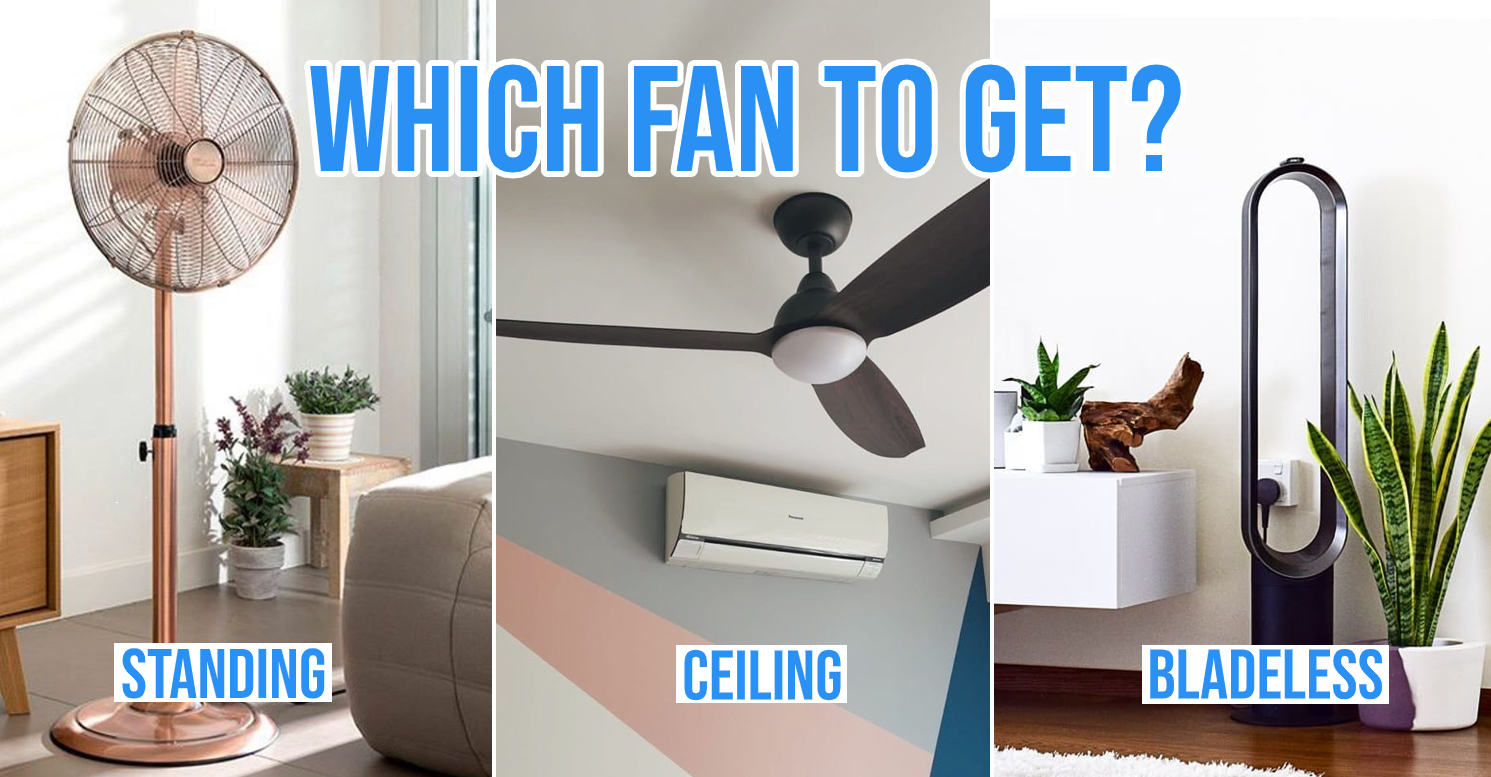
Choosing BTO household items & making renovation decisions
Image adapted from: @makeahouseahome__, @decorfansingapore, @pine.sg
You’ve worked your way through the confusing application process, selected your unit, made all your downpayments, and are finally on your way to building your love nest. But here comes another set of things to mull over: furniture and design.
It’s not as simple as going to IKEA, picking out a couple of pieces, and calling it a day. Apart from making sure the aesthetic is seamless throughout, you’ll also want to get the most suitable furniture based on your needs. After all, these are all big-ticket purchases and permanent renovation-related processes, so you’ll want to think carefully before dropping your cash.
Here’s a comparison of various types of household items and fixtures like flooring, so you can make an informed decision for your BTO.
Read our other articles on HDB renovation and furniture options:
- Space-saving furniture from Ezbuy from $4
- Guide to lighting your HDB
- Guide to choosing bathroom fixtures for your HDB
- Guide to applying for BTO
1. Flooring – vinyl or porcelain tiles?
Vinyl flooring
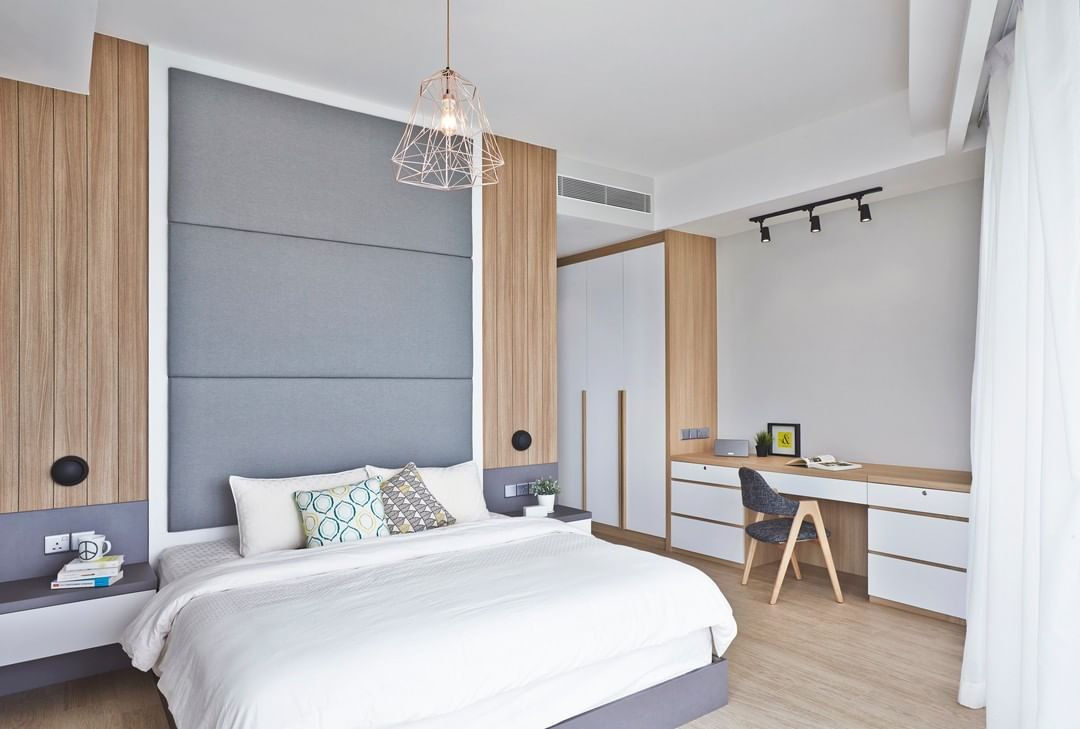
Image credit: @spacedefine
Ah, it’s that MUJI vibe every Singaporean millennial couple is crazy over. Yup, vinyl flooring is the way to go for that light, minimalistic look. Vinyl floors come in various shades of brown, mimicking the appearance of wood, and arguably the most popular is a light brown/beige tone.
Apart from that attractive Japanese-style appearance is its noise-absorption properties, which makes it great for those with young children whose feet never stop moving. It’s also cheaper than porcelain tiles.
However, you get what you pay for; Vinyl is less hardy, with a lifespan of 10 to 20 years. The floorboards might buckle due to expansion and contraction during changes in weather, resulting in a bumpy surface beneath your feet. You also have to be careful when mopping as water will eventually wear down the wax layer on top.
Price: $$
Porcelain tiles
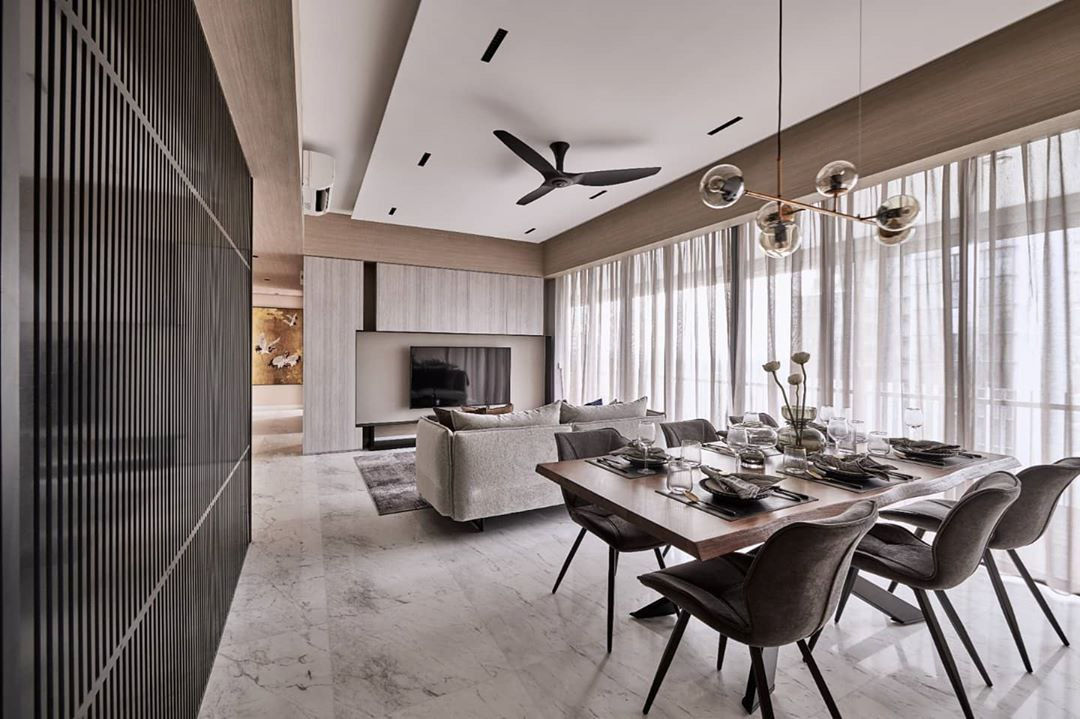
Image credit: @19eightythree.sg
If you’re not a fan of the uneven lines that come with vinyl, porcelain tiles are a sleeker alternative. Depending on your chosen design, they can have a similar appearance to marble – minus the crazy price tag.
Highly durable, porcelain tiles can last up to 20 years or more, and are resistant to scratches and stains. So there’s little to worry about even if you’re a klutz who constantly spills things.
Price: $$$
2. Stove – gas or induction?
Gas stove
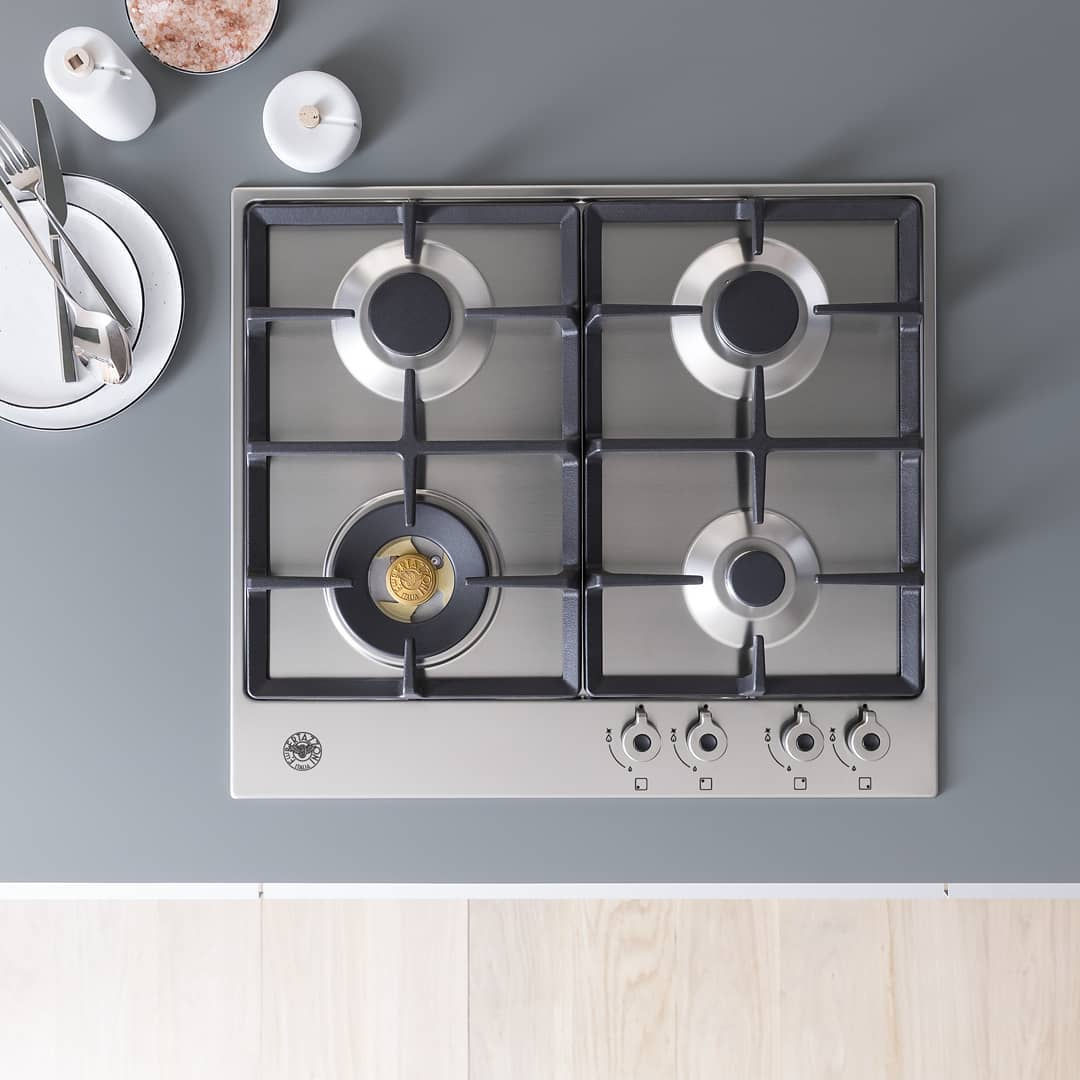
Image credit: @bertazzonisg
Most of us who’ve attempted to cook instant noodles or attended Home Econs classes should already be acquainted with gas stoves. They’re found in a majority of Singaporean homes, and the open flame allows you to whip up delicious wok hei dishes like char kway teow. Can’t really go wrong here.
One downside of sorts is that you can’t control the temperature to a specific degree, so you’ll have to adjust the flame based on your gut feel – but that only trains your Masterchef abilities.
Cleaning can be a hassle as you’ll have to lift up the metal rack and wipe all the nooks and crannies carefully so that there will be no stuck morsels attracting ants and cockroaches.
Do note that you’ll have to sign up and pay for gas separately with a gas provider when using such a stove. Don’t forget this, or you might just find that there’s no supply at all when you move in.
Price: $$
Induction stove
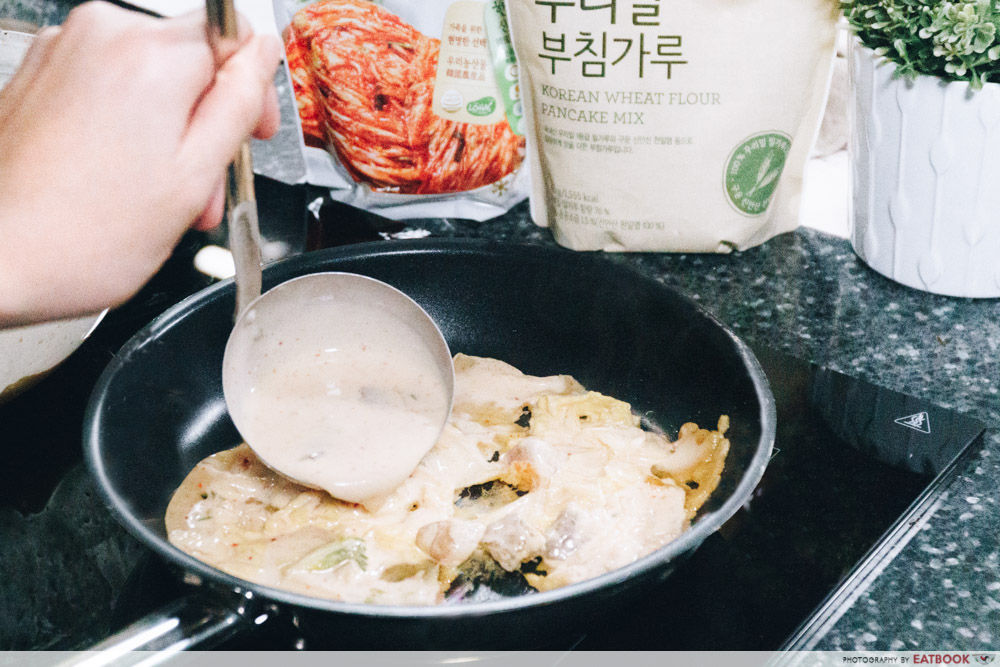
An induction stove is ideal if you flinch each time the flames of a gas stove so much as lick the sides of your pan. No fire is involved here, and you won’t burn your fingers if you accidentally rest your hand on top.
It’s not just for the scaredy cats, though – if you have actual cats who enjoy a good climb, or curious kids with a case of “itchy fingers”, this is something to consider for safety reasons. In the event that the stove is left on by accident, you won’t have to deal with the danger of a gas leak either.
Induction stoves are more energy efficient as they heat up faster, and the flat surface can also double up as a kitchen workspace – though avoid doing any cutting directly on it, lest you create any scratches. Temperatures can be specifically adjusted, which means more preciseness.
However, these cost $500 to $1000 more than a regular gas stove, and you’ll have to buy pots and pans with special compatibility. A lack of open flame also means that you can’t create a certain charred flavour that some dishes require, so this is better for those who only do light cooking.
Find out more about choosing a stove and other in our article here.
Price: $$$
3. Fan – ceiling, standing, or bladeless?
Ceiling fan
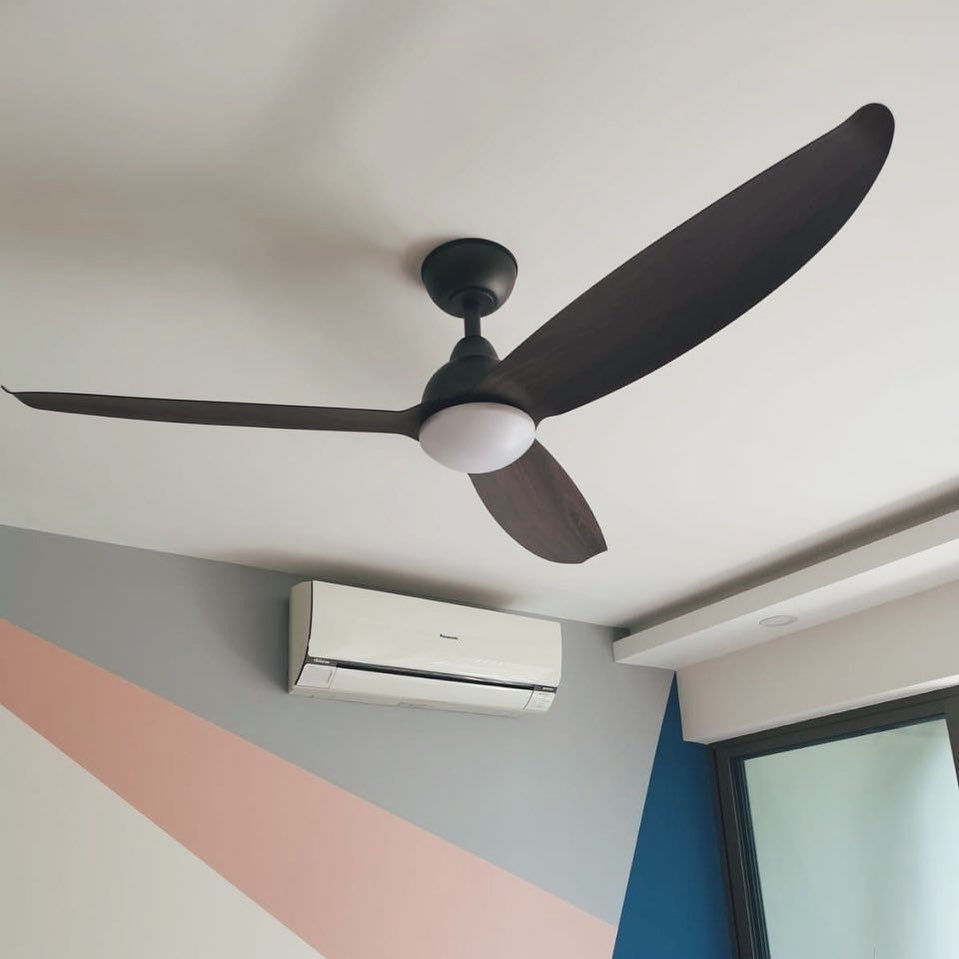
Image credit: @decorfansingapore
If you don’t have a phobia of it suddenly crashing down on your head – which usually never happens anyway – a ceiling fan is a good pick for a well-ventilated home as the wide blades allow for best air movement. It doesn’t take up any floor space, which is a huge plus point when you live in a tiny apartment.
These days, ceiling fans are highly stylish, and some even have wooden-looking finishes – nothing like the standard white classroom fans we had back in school. Some come with built-in lights, others don’t. If the latter, you might have to look into building a false ceiling for added light fixtures.
Cleaning will be troublesome as you’ll have to balance precariously on a ladder. That won’t bode well in old age, so it’s something to think about when planning for the long term.
For safety reasons, ceiling fans should not be installed in children’s rooms if you think your future kids might be sleeping on a double-decker bed.
Price: $$$
Standing fans – regular and bladeless
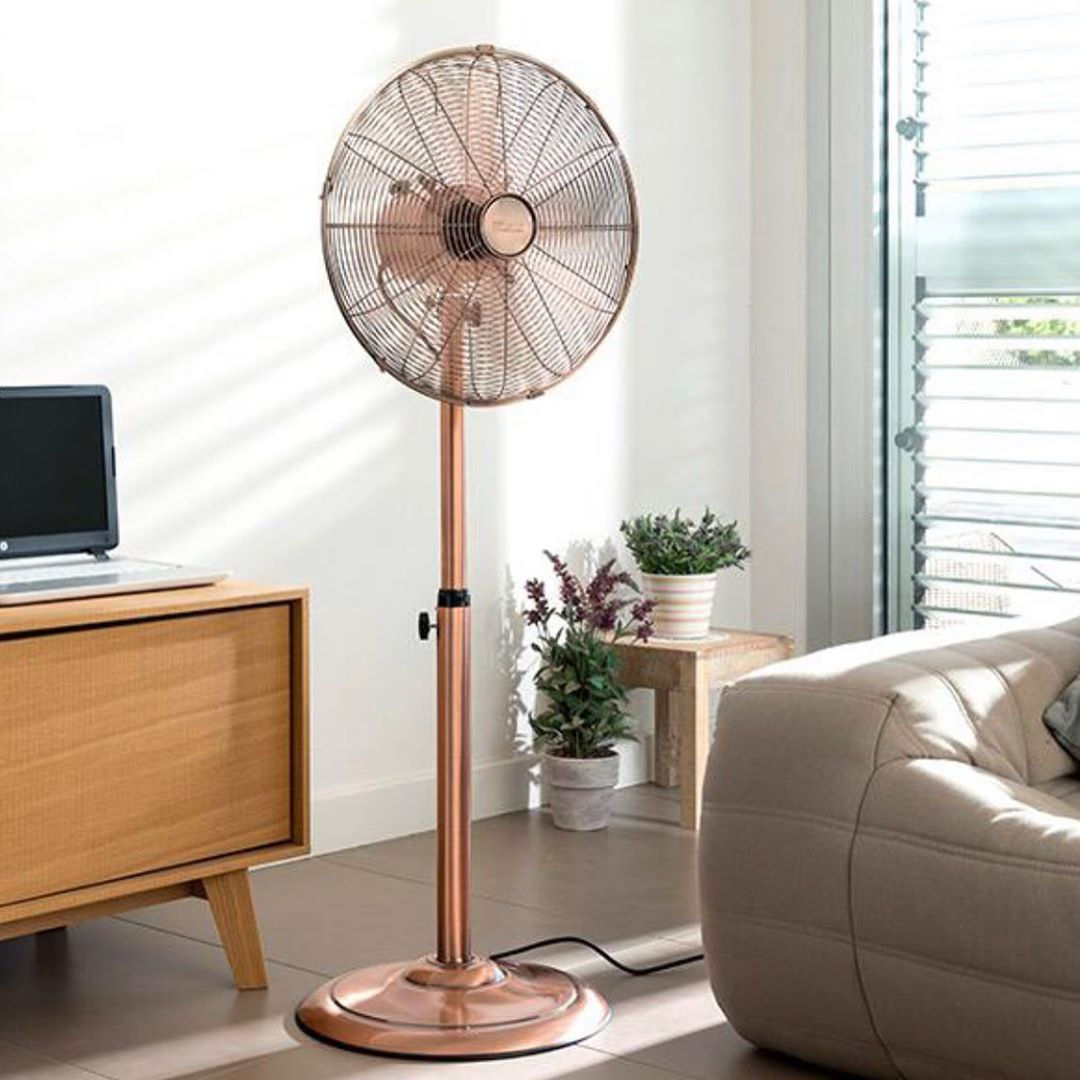
Image credit: @makeahouseahome__
A regular standing fan is something almost all our parents’ homes have. They’re super affordable, with some models costing less than $50. Younger folks might deem them “unsexy”, as they come with colourful plastic or clunky metal stands. However, you can try searching for more modern designer options, with rose gold finishing and wooden tripod legs.
Though the fan head takes up quite a bit of space especially when it’s oscillating, the entire device is easily portable and requires minimal set-up. It’s also a low-commitment household item, because if it spoils, you just need to dump it and get a new one without the hassle of re-installation.
Keep your pets and kids away from these fans, as the blades can cut them or yank at long hair.
Over time these can get rattly and noisy, so some oiling and tinkering might be required.
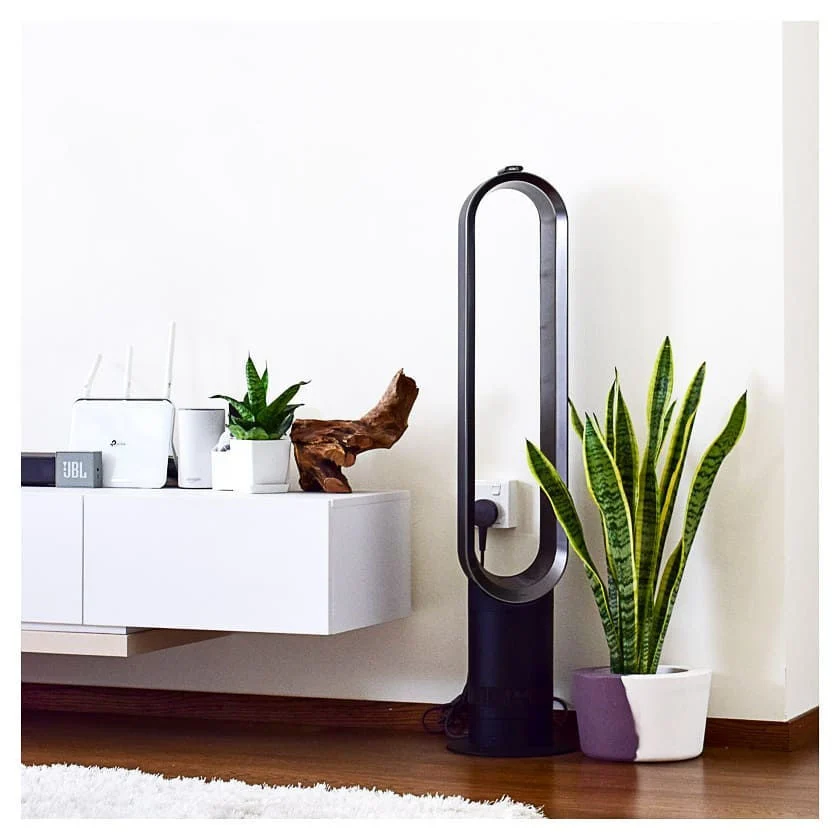
Image credit: @pine.sg
Another alternative is a bladeless fan, the new “it” household item made popular by Dyson. They’re slim, virtually noiseless, and super safe. Having no blades to dismantle means easier cleaning – you can just wipe it down with a damp cloth in a matter of seconds.
You also won’t have to worry about your little ones poking their tiny fingers through the grilles and getting themselves hurt.
Dyson fans typically range from over $300 to over $600, but there are other brands in the market now with more competitive pricing. Still, these are much pricier than regular standing fans.
Price: Regular, $ | Bladeless, $$$
4. Wardrobe – built-in, standalone, or open?
Built-in wardrobe
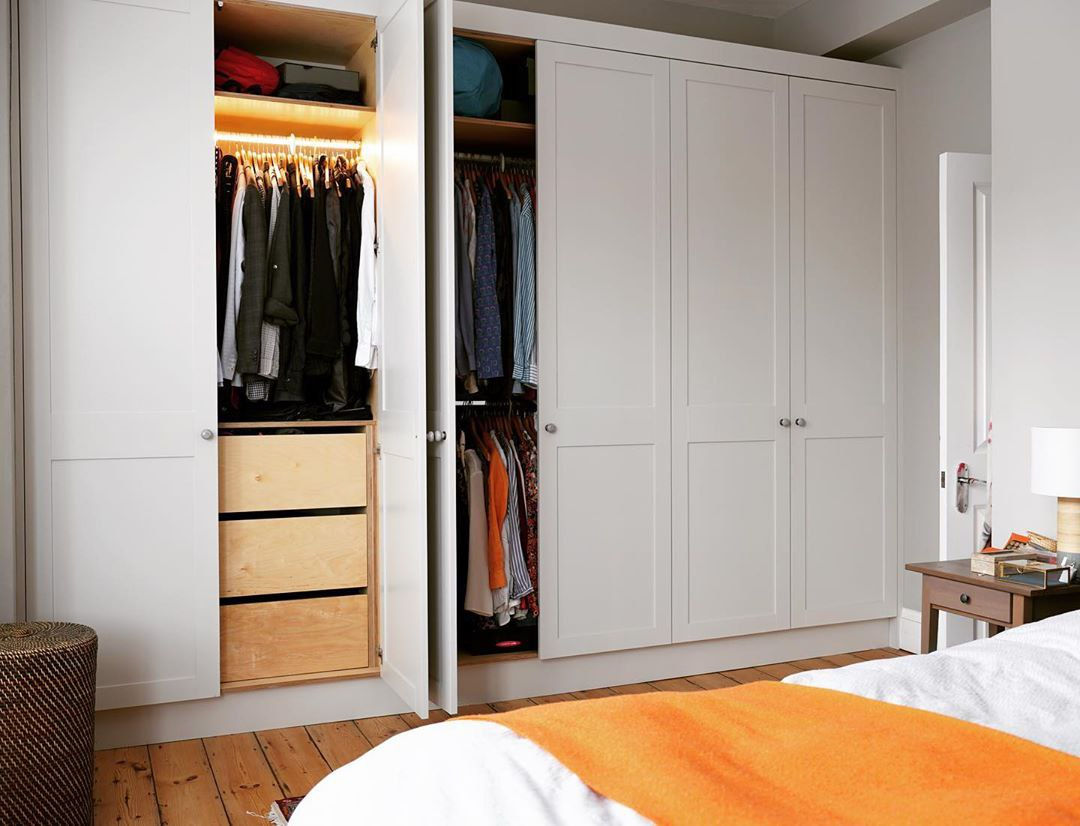
Image credit: @woodworksbrighton
The amazing thing about built-in wardrobes is that you can customise everything to a T. Usually, people design these such that they fill an entire wall for space maximisation. No wasted gaps on top means not having to worry about dust settling or any pesky lizards hiding in the crevices.
It’s more expensive than a store-bought cupboard, but it’s a long-term investment. Bear in mind that if the cupboard spoils or you decide to alter the configuration of your room, you’ll likely have to hack the whole thing apart and start anew. Consider this carefully in your renovation planning.
Price: $$$
Standalone wardrobe

Image credit: @a.s.helsingo
A standalone wardrobe is an affordable household item that makes life easier for the fickle-minded, in the sense that everything is already laid out, without the need for you to ponder over how to design it. These days, many such wardrobes come with a whole range of compartments, including jewellery and watch drawers. Some have movable shelving boards which you can rearrange any way you please.
Price: $$
Open wardrobe
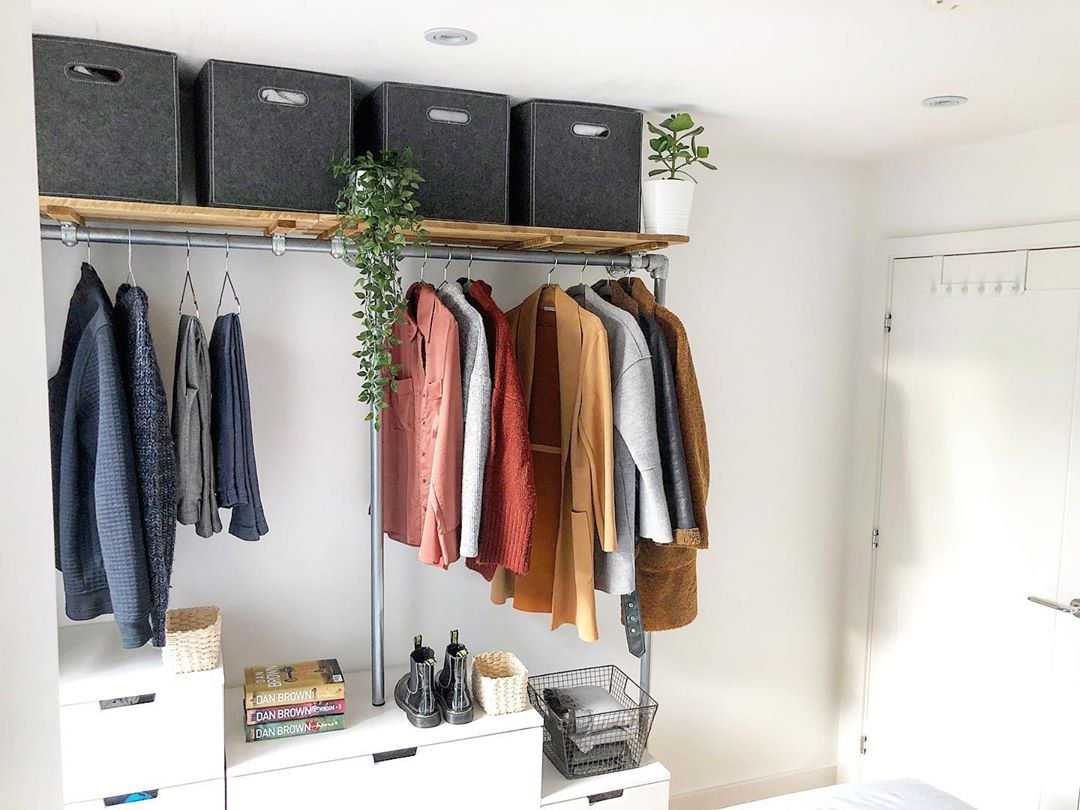
Image credit: @microliving_lnd
With Marie Kondo’s philosophy of living minimalistically still in trend, open wardrobes are all the rage these days. They force you to stick to the basics, which makes you less dependent on your appearance to feel good. And with everything neatly arranged in a row, they’re super pleasing to the eye – in catalogs, that is.
As reality would have it, most of us do not have clothes that come in the same few shades, or just 10 pieces of apparel that can be laid out according to colour spectrum.
An equally important concern? The amount of dust that’ll settle on your clothes and household items on a daily basis. Our verdict: This probably isn’t the most practical of choices.
Price: $
5. Sofa – leather or cloth?
Leather sofa
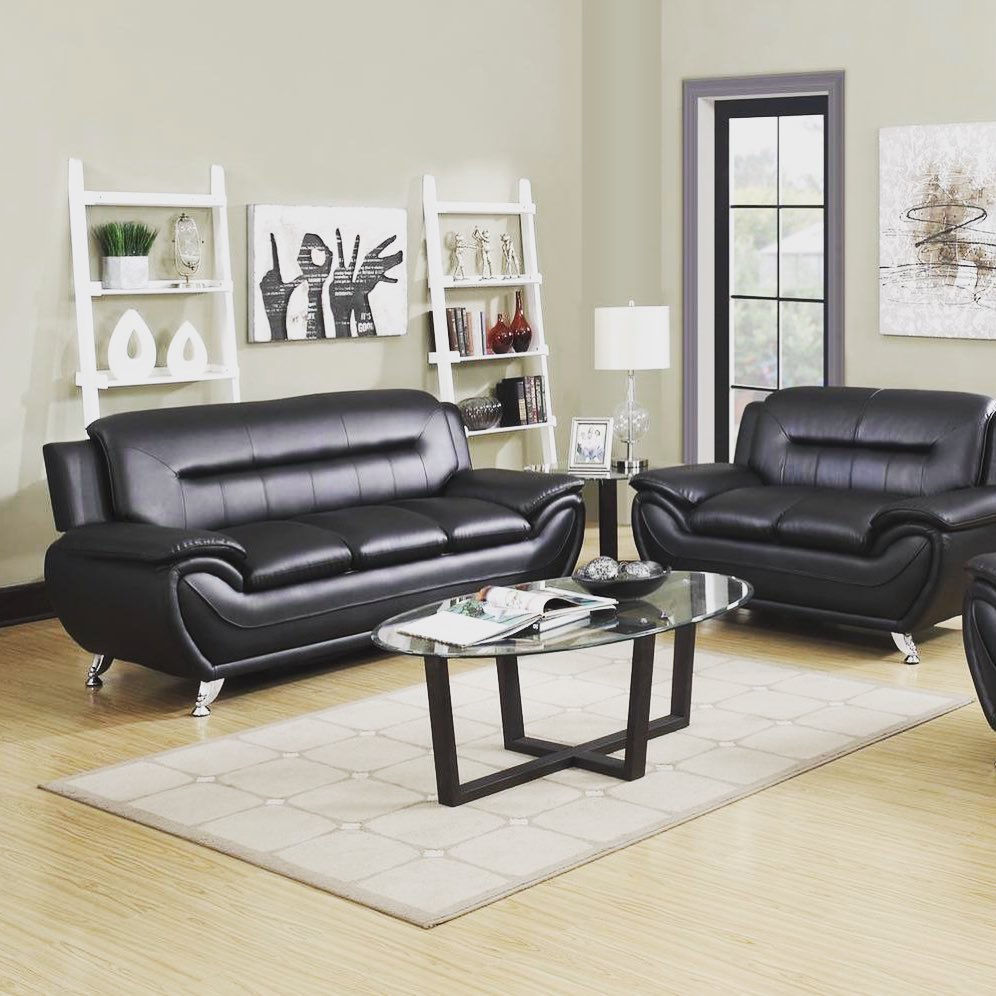
Image credit: @m.ifurniture
Those with kids are probably firmly on team leather sofa, as they don’t stain and are much easier to clean in the event of juice spills, vomit, and pee accidents. As with all leather products, these are slightly more expensive than their fabric counterparts.
However, long-term maintenance isn’t the easiest – you’ll have to invest in a proper leather cleaner and conditioner, especially with our humid weather. Else, the material will form unsightly lines and crack.
Depending on the colour and design, leather sofas can have a bit of an “old timey” look – which can be a good or bad thing, depending on the desired vibe of your living room.
Price: $$$
Cloth sofa
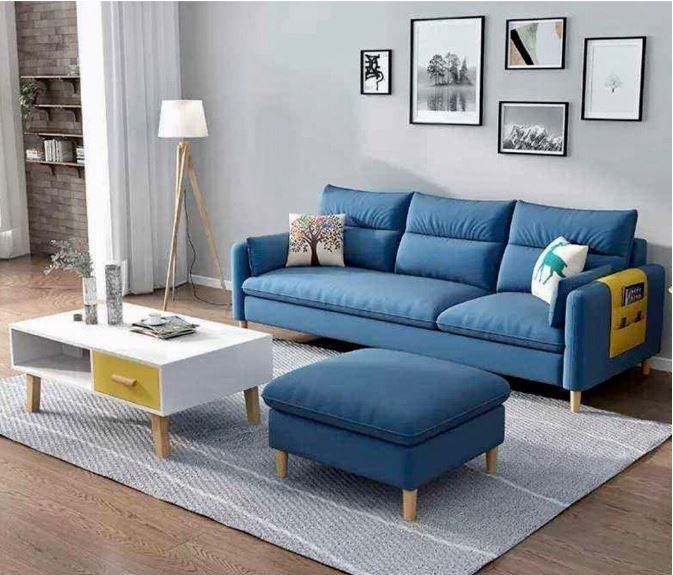
Image credit: @sofanala
Cloth sofas tend to look more modern, and come in a better variety of colours compared to the standard nondescript tones of leather sofas.
But as with household items that are made of cloth, these stain easily, so you gotta be uber careful when munching on snacks and wine while parked in front of the telly. You can’t strip the fabric covering and dunk it in the washing machine either – you’ll have to clean it through a mix of vacuuming and upholstery solution. Getting a dry-steamer is also an option.
Price: $$
6. Kitchen – open concept or closed?
Open concept kitchen
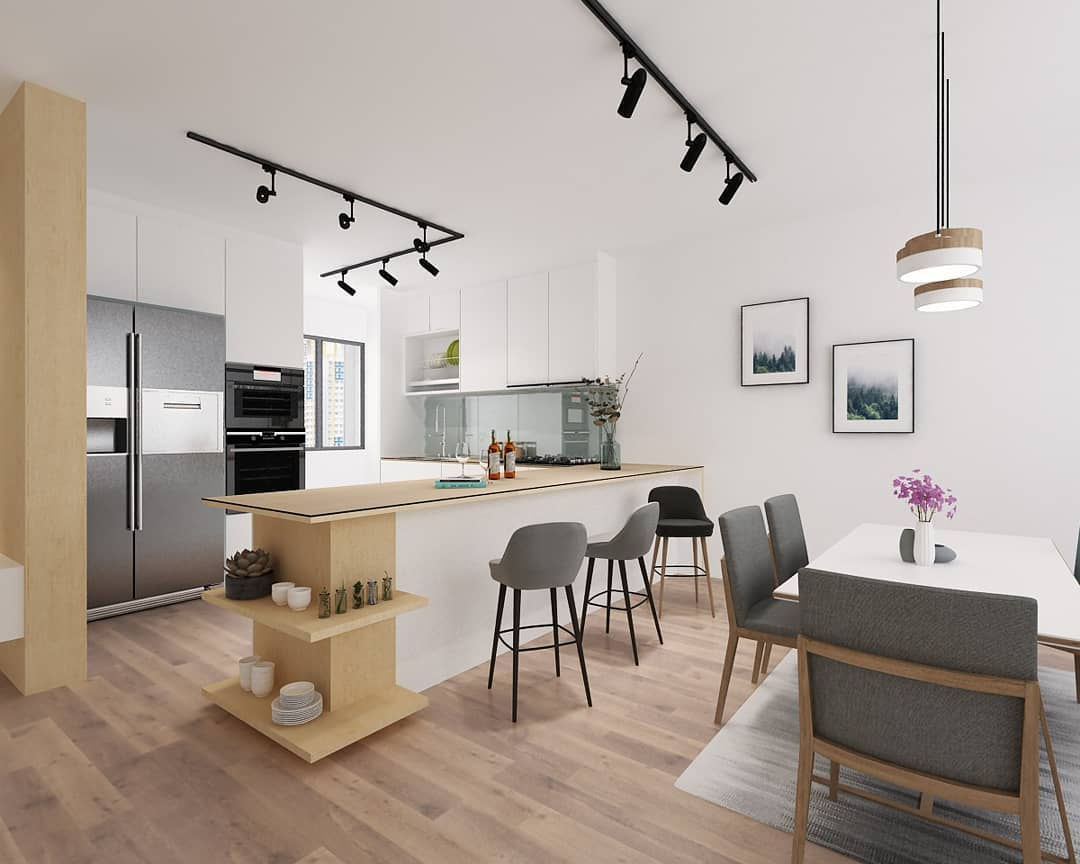
Image credit: @omni_interior_design_sg
If your floor plan permits, it’ll be tempting to splurge a little to knock down some walls to create an open concept kitchen. Merging nicely with your living room, it’ll create the illusion of a bigger space.
You’ll get better ventilation while cooking, but that also means the smell of the food will waft into your living area and possibly cling onto the curtains and furniture. Frequent airing is a must if you don’t want your abode to smell like a kopitiam.
Price: $$$
Closed kitchen
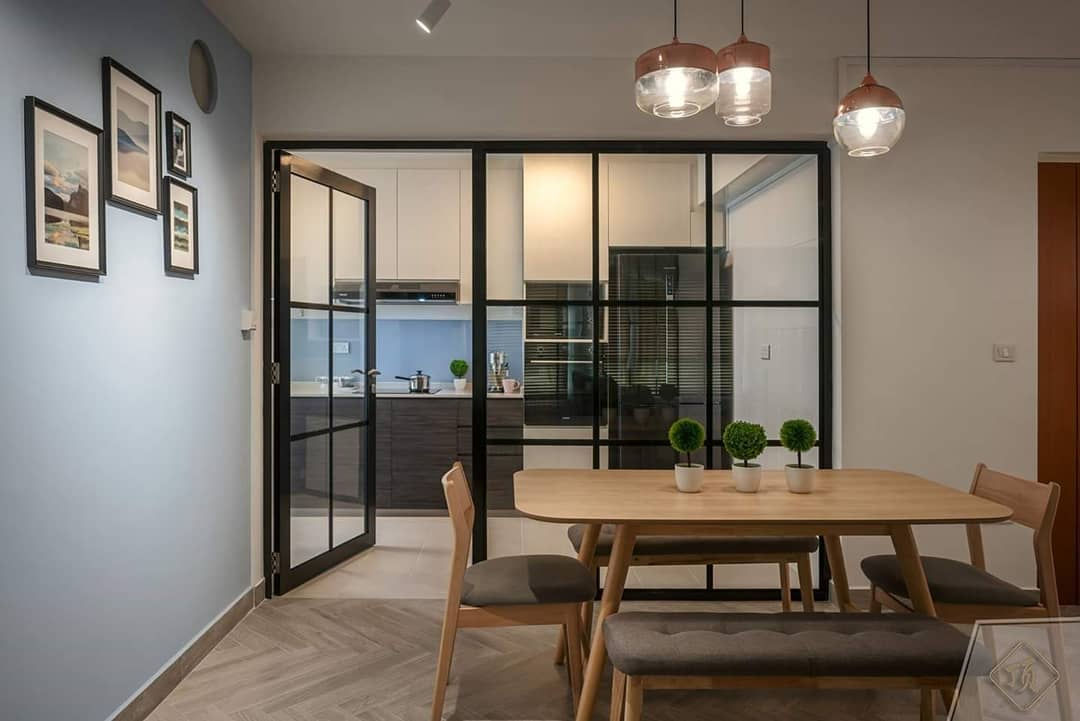
Image credit: @zenitharcpteltd
A closed kitchen keeps those smells in, but may result in a sweatier cooking experience since all that heat is contained.
But this is a good idea if safety is a priority. A sliding door will keep your children and hyperactive pets out when you’re dealing with sharp knives and bubbling pots. Get a transparent door for a chicer look, and so you can still keep an eye on your little critters from where you are.
Price: $$
7. Window shades – curtains or blinds?
Curtains
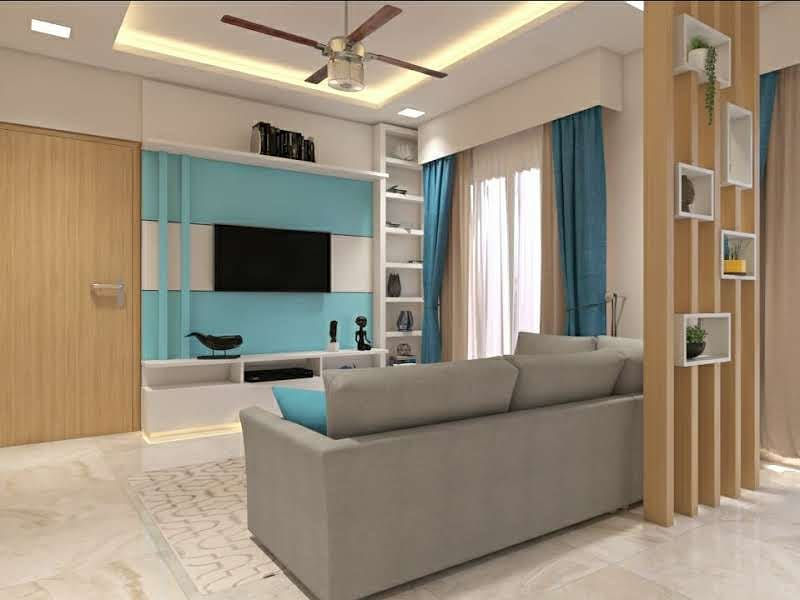
Image credit: @mk__interiors_
Curtains offer good privacy from prying eyes. As pictured above, you can have two layers – an opaque one with blackout properties to block light out completely, and a lighter sheer sheet to let some sun stream in. Unless you go for premium linen, curtains are generally affordable and shouldn’t cost more than $30.
Throwing them into the washing machine for a tumble is easy. How often we take them down to clean them is another story, though. Those who are asthmatic or allergic to dust would need to make sure these are washed on a regular basis.
They might also cause your room to feel stuffy if you don’t have air-conditioning.
Price: $
Venetian blinds
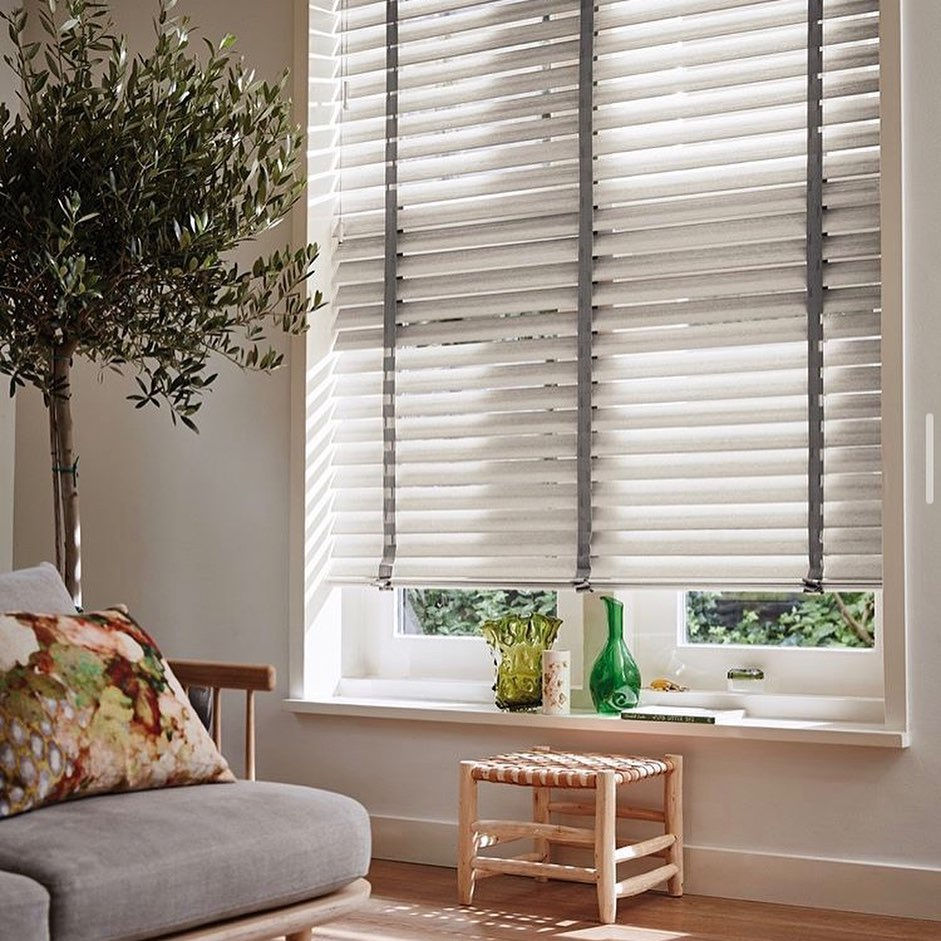
Image credit: @inside_design_by_aodhain
Some might consider horizontal Venetian blinds dated, but style them properly and they can look pretty cute, especially in a country-style home.
These household items are most commonly made of metal and plastic. The thin slats are delicate, so you have to be careful as they can bend and snap if not treated well. A cloth is all you need to clean them with, but it’s a painstaking process as you have to be gentle and avoid damaging the string mechanism in between the strips.
Venetian blinds might cause some hassle in opening and closing of windows, so they’re best used for windows that are either constantly left semi-open, or always closed in air-con.
You can easily adjust how much sunlight you wish to filter in thanks to the moveable slats. But depending on how the light falls, you might encounter line shadows being cast into your room – not the most conducive if your study desk gets the brunt of it.
Price: $$
Vertical blinds
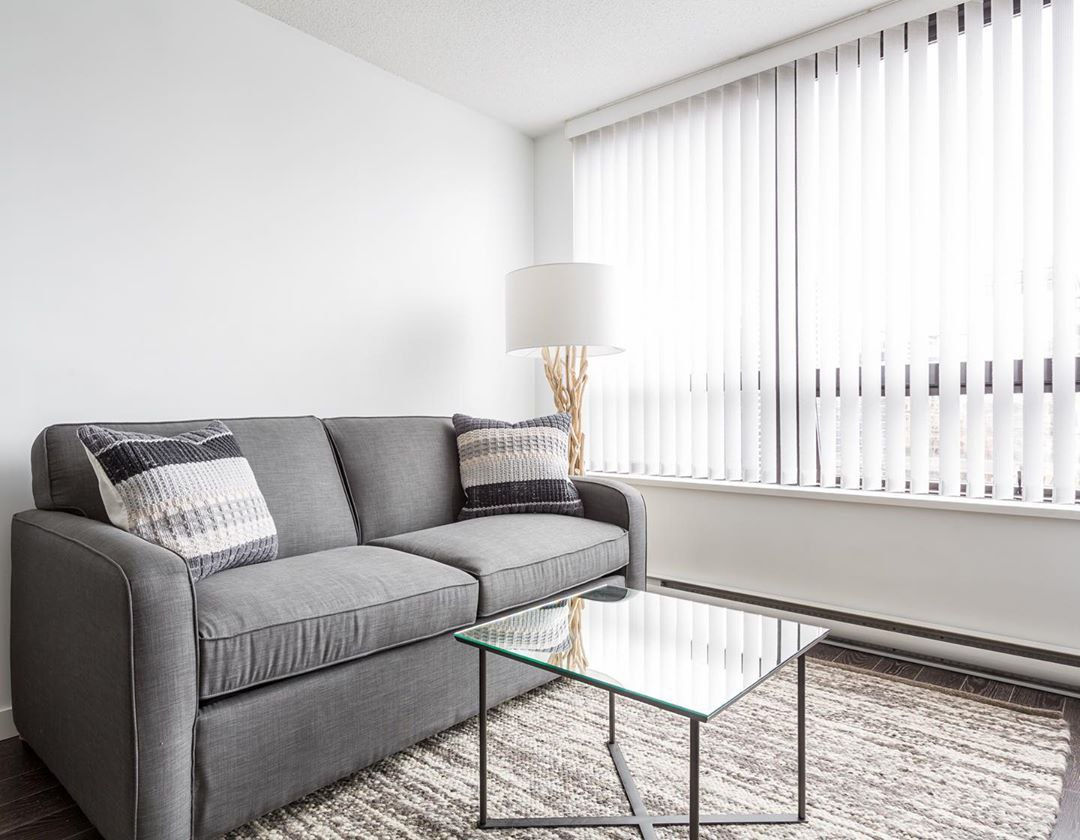
Image credit: @meblinds
Vertical blinds work in a similar way to Venetian blinds, apart from the direction in which the slats lie. This helps give the illusion of a lengthened wall, which is welcome in any tiny HDB flat. Best suited for wide sliding windows, these household items are much easier to clean with a few swipes of a cloth, since the string mechanism is in a clean line right at the top.
Price: $$
Guide to HDB household items & renovation
There seems to be a million and one things to settle when putting your dream home together – especially if you’re a first-timer who knows nuts about renovation. With this guide, choosing household items and design concepts for your BTO won’t be too mind-boggling. Don’t fret, work through it bit by bit, and you’ll realise it’s not that much of a mammoth task after all.